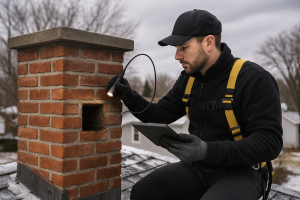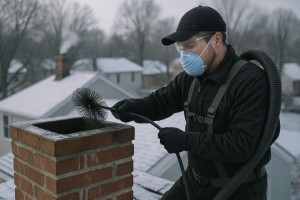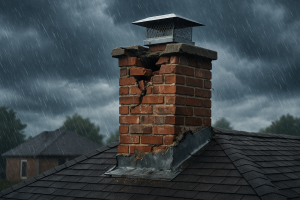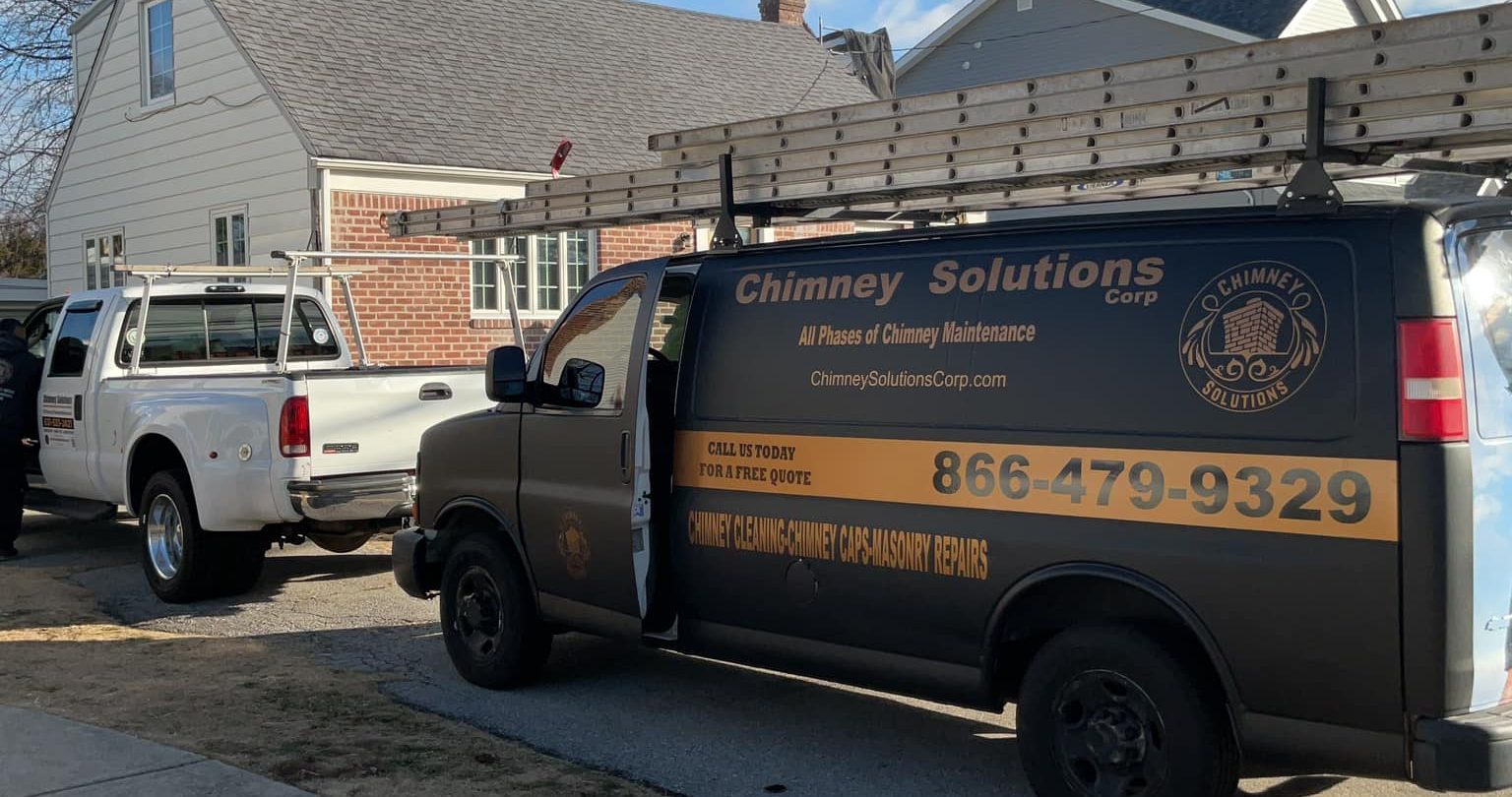How Coastal Weather Impacts Long Island Chimneys
Long Island’s unique coastal environment, influenced by its proximity to the Atlantic Ocean and the weather conditions of the Northeast, poses particular challenges for homeowners, especially regarding the maintenance of chimneys. From increased precipitation to the effects of sea level rise, these environmental factors can have a significant impact on chimney structures. This article delves into the various ways coastal weather, including extreme weather events and long-term climate change, affects chimneys on Long Island, offering practical advice for maintaining and protecting these vital home structures.
The Vulnerability of Long Island’s Chimneys to Coastal Weather
Long Island, stretching from New York City to Montauk, is surrounded by water on all sides, making it particularly susceptible to the impacts of coastal weather. The South Shore, home to communities such as the Hamptons, Fire Island, and Shinnecock, is especially vulnerable to storm surges, high tides, and shoreline erosion. As sea levels continue to rise, driven by climate change, these areas experience more frequent and severe flooding, putting homes and their chimneys at risk.
Chimneys in low-lying, flood-prone areas face constant exposure to saltwater, which can lead to the deterioration of masonry and flue systems. The salt carried by sea breezes can penetrate brickwork, causing corrosion over time. Additionally, coastal weather often brings heavy precipitation, which, when combined with poor water drainage systems, can exacerbate water damage to chimneys. The increased moisture can lead to the growth of mold and mildew inside chimneys, posing health risks to homeowners.
The Impact of Storm Surges and Extreme Weather Events
The U.S. Army Corps of Engineers has documented how storm surges, particularly during major weather events like Superstorm Sandy, have devastating effects on coastal infrastructure. Chimneys are no exception. During these extreme weather events, the combination of high winds, heavy rain, and storm surge can cause significant structural damage. In areas like Suffolk County, where seawalls and bulkheads are common but sometimes insufficient, chimneys often bear the brunt of these powerful storms.
Superstorm Sandy, which struck the Northeast in 2012, highlighted the vulnerability of Long Island’s coastal communities. The storm caused widespread destruction, with many homes on the South Shore experiencing severe damage to their chimneys due to the storm surge and high winds. The combination of saltwater inundation and intense wind pressure can dislodge chimney caps, crack masonry, and even cause entire chimneys to collapse.
The Role of Shoreline Erosion and Sediment Shifts
Shoreline erosion is a significant concern for Long Island, particularly on the barrier islands such as Fire Island. The constant shifting of sediments, driven by the natural ebb and flow of tides as well as human activities like dredging and stabilization projects, can lead to the destabilization of foundations, including those supporting chimneys. As the shoreline recedes, homes closer to the water’s edge become more vulnerable to the elements, increasing the risk of chimney damage.
Wetlands and salt marshes, which serve as natural buffers against storm surges and erosion, are also being threatened by climate change and sea level rise. As these ecosystems diminish, the protective barrier they provide to inland areas weakens, leaving homes and their chimneys more exposed to the harsh coastal conditions.
Climate Change and Its Long-Term Effects on Chimneys
The long-term impacts of climate change on Long Island are becoming increasingly evident. Rising sea levels and increased precipitation are not only contributing to more frequent flooding but also altering the local climate in ways that directly affect chimney maintenance. For example, higher temperatures and humidity levels can accelerate the deterioration of chimney materials, while more intense weather events can lead to quicker wear and tear.
As precipitation patterns change, with heavier downpours becoming more common, the risk of water damage to chimneys increases. Water that enters a chimney can freeze during cold weather, causing the masonry to crack and weaken—a process known as freeze-thaw weathering. Over time, this can lead to significant structural issues, including the collapse of the chimney.
The Importance of Regular Chimney Maintenance in Coastal Areas
Given the unique challenges posed by Long Island’s coastal weather, regular chimney maintenance is crucial. Homeowners should consider the following steps to protect their chimneys from the elements:
- Annual Inspections by a Professional Chimney Sweep: Regular inspections can identify early signs of damage, such as cracks in the masonry or issues with the flue. A certified chimney sweep can also remove any debris or buildup that could exacerbate damage during storms.
- Waterproofing the Chimney: Applying a waterproof sealant to the exterior of the chimney can help protect it from the corrosive effects of saltwater and precipitation. This is especially important for homes on the South Shore and other low-lying, coastal areas.
- Installing a Chimney Cap: A chimney cap can prevent water, debris, and animals from entering the chimney. It also helps reduce the amount of moisture that can accumulate inside, thus preventing water damage and mold growth.
- Repointing and Repairing Masonry: Over time, the mortar between bricks can deteriorate, especially in harsh coastal environments. Repointing, or the process of renewing the outer portion of the mortar joints, can help maintain the structural integrity of the chimney.
- Regular Cleaning to Prevent Salt and Sediment Buildup: For homes close to the coast, it’s important to regularly clean the exterior of the chimney to remove salt and sediment that can cause damage over time.
Government and Community Efforts to Mitigate Coastal Weather Impacts
In response to the growing threats posed by climate change and extreme weather events, various government agencies and community organizations are taking action to protect Long Island’s coastal areas. The New York State government, along with federal agencies like the U.S. Army Corps of Engineers, has implemented several shoreline stabilization projects aimed at reducing erosion and protecting infrastructure, including homes and their chimneys.
These projects often involve the construction of seawalls, bulkheads, and other barriers designed to absorb the impact of storm surges and high tides. Additionally, efforts to restore and preserve wetlands and salt marshes are critical in providing natural protection against coastal weather impacts. By maintaining these ecosystems, the state hopes to mitigate the effects of future storms and sea level rise on vulnerable communities.
Case Studies: The Hamptons, Montauk, and Fire Island
The Hamptons, Montauk, and Fire Island are prime examples of how coastal weather impacts chimneys in different ways across Long Island. In the Hamptons, luxury homes with extensive chimneys are often subjected to the full force of coastal winds and salt air, requiring frequent maintenance to prevent deterioration.
Montauk, located at the eastern tip of Long Island, faces direct exposure to the Atlantic Ocean. The constant battering of waves and winds, coupled with the area’s sandy beaches and low-lying topography, makes chimneys particularly vulnerable to damage. Homeowners in Montauk often need to invest in more robust chimney construction and maintenance practices to protect their properties.
Fire Island, a narrow barrier island, is highly susceptible to erosion and the effects of storm surges. The island’s unique geography means that even minor shifts in the shoreline can have a significant impact on the stability of homes and their chimneys. Fire Island homeowners must be particularly vigilant about maintaining their chimneys, as any damage can quickly escalate due to the island’s isolated location and limited access to emergency repair services.
Conclusion: Preparing for the Future
As climate change continues to affect Long Island’s coastal weather, homeowners must remain proactive in maintaining and protecting their chimneys. Understanding the specific challenges posed by the local environment—such as sea level rise, increased precipitation, and shoreline erosion—is key to preventing costly damage and ensuring the longevity of chimney structures.
By investing in regular inspections, waterproofing, and other preventative measures, homeowners can mitigate the impacts of coastal weather and safeguard their homes for the future. Furthermore, supporting government and community efforts to protect Long Island’s coastlines will be essential in preserving the region’s unique character and ensuring the safety of its residents.
Long Island’s chimneys may stand tall, but without proper care and attention, they could easily fall victim to the relentless forces of nature. By staying informed and taking action, homeowners can ensure their chimneys remain strong and functional, no matter what the weather brings.



